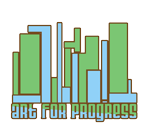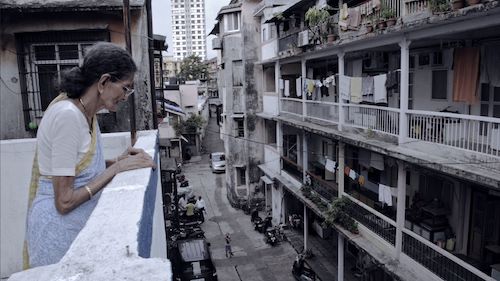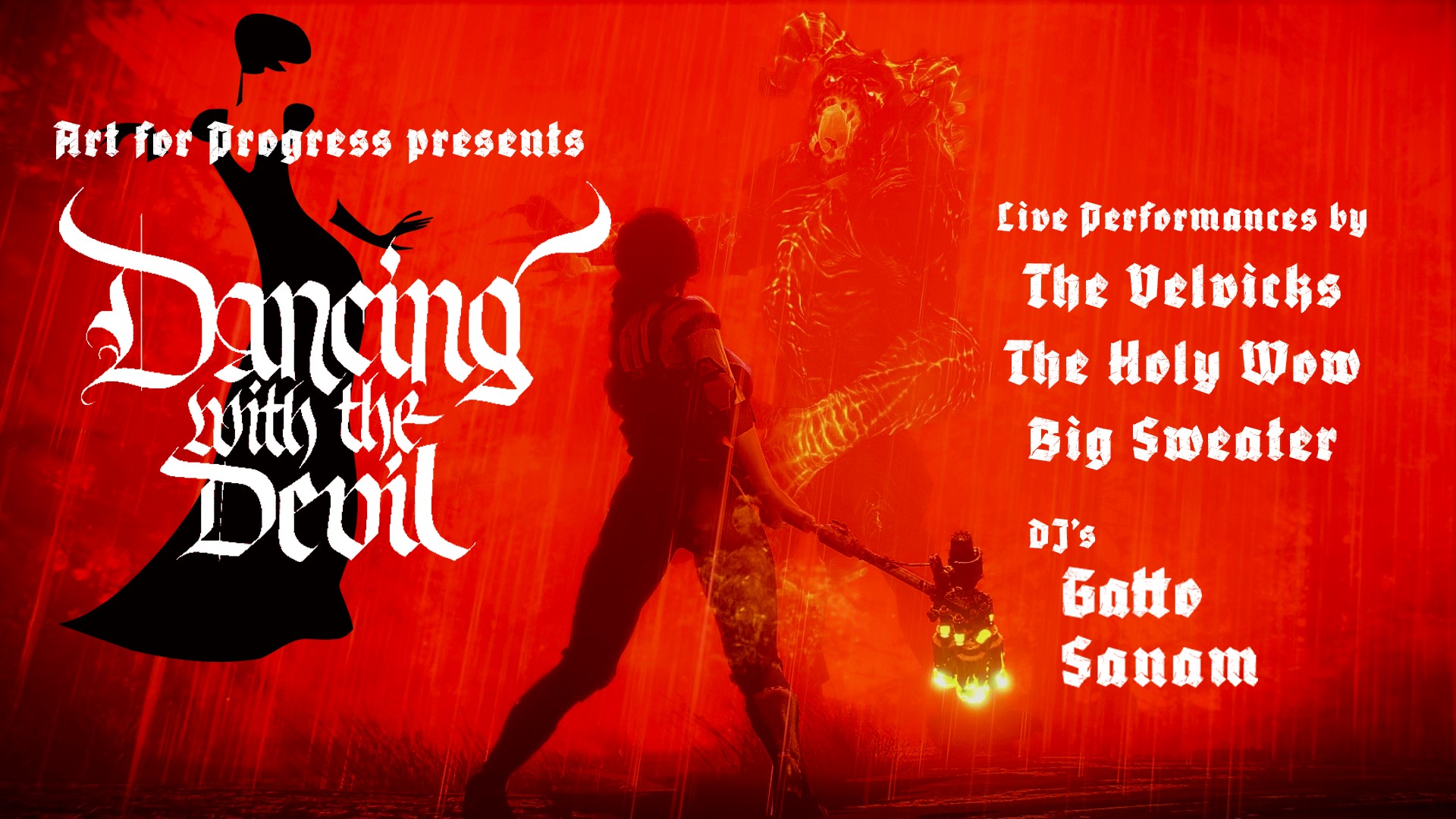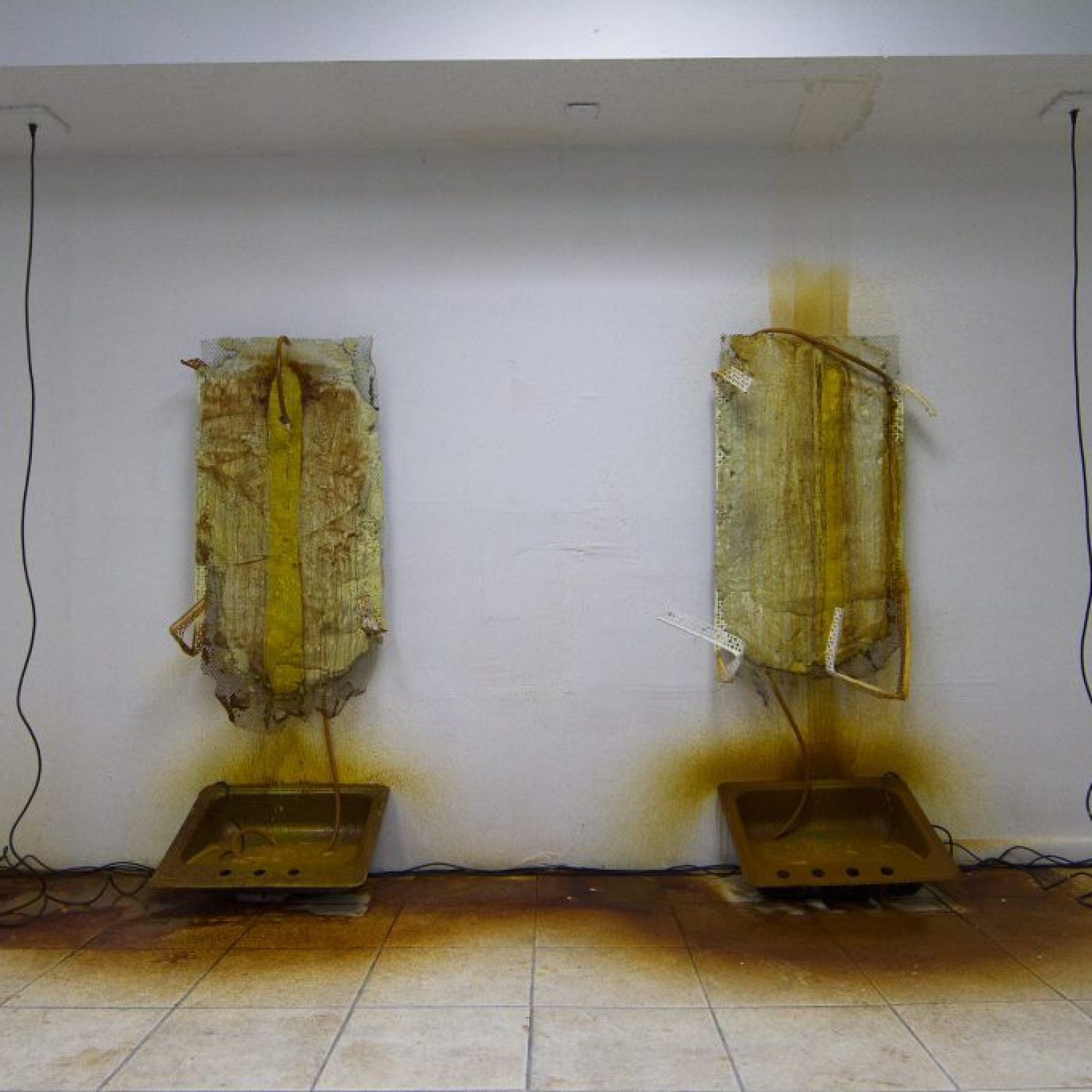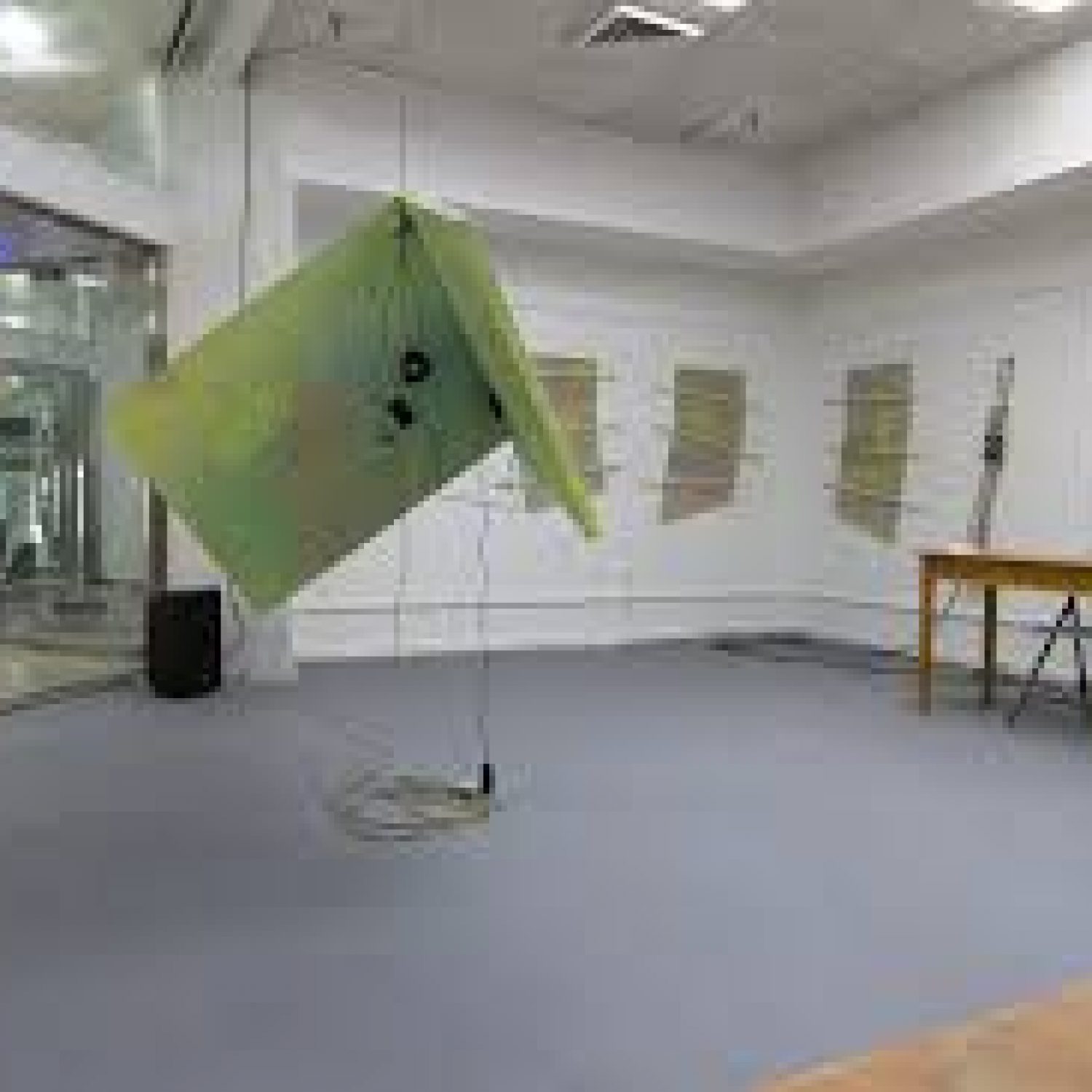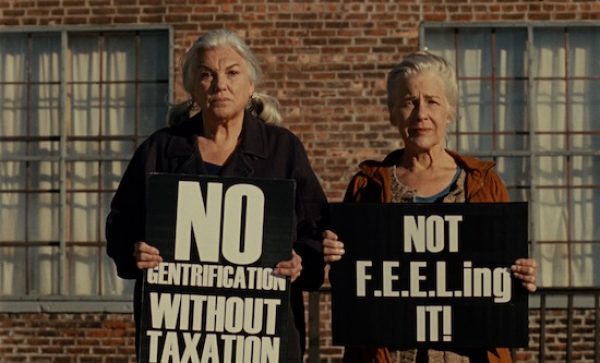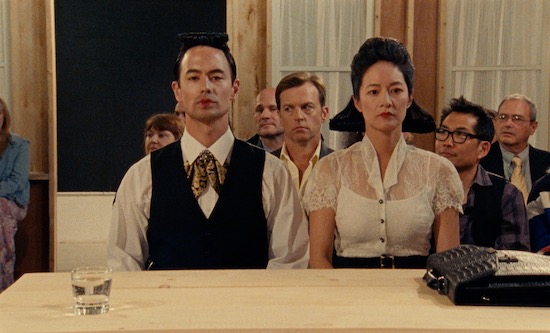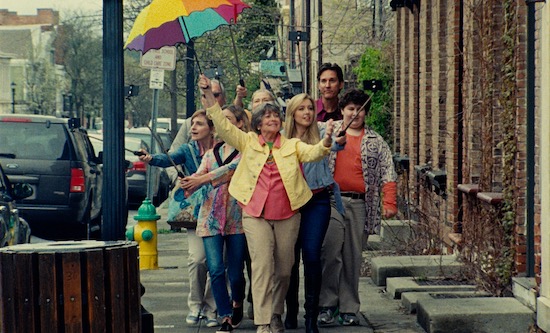- 5 years ago
-
The 10th Anniversary edition of DOC NYC – America’s largest documentary festival – takes place from November 6 through 15. Among the 300+ films and events are 28 World Premieres, 27 U.S. Premieres, and 59 NYC Premieres. More than 500 doc makers and special guests will be on hand to present their films or participate on panels. This year’s festival is dedicated to the memory of D.A. Pennebaker (Don’t Look Back, Monterrey Pop), a DOC NYC fixture who died this past summer.
As always, there is a multitude of worthy films from all over the world, in myriad styles, about almost every conceivable subject. Individual portraits include the founder of the World Toilet Organization (Lily Zepeda’s Mr. Toilet: The World’s #2 Man); an innovative and iconic punk performer (Beth B’s Lydia Lynch: The War Is Never Over), and a revered Abstract Expressionist painter (Dennis Scholl’s Lifeline: Clyfford Still), plus many others.
Among this year’s offerings are docs sure to make you seethe (Matthew O’Connor & Barnaby O’Connor’s The Pickup Game, about the billion-dollar industry fueling the “art” of picking up women, and Deia Schlossberg’s environmental expose The Story of Plastic); docs that will crack you up (Weijun Chen’s comedic City Dream, about a Chinese street vendor who clashes with authorities); and docs that will make certain people wildly nostalgic (Scott Crawford’s Boy Howdy! The Story of Creem Magazine).
Here are just a few more highlights:
About Love
Archana Atul Phadke’s funny, poignant doc portrays her close-knit family during the time leading up to her brother Rohan’s marriage. With three generations living under one Mumbai roof, there’s a lot of teasing and joking, though there is also pain and frustration. Phadke focuses an especially sympathetic lens on her mother and grandmother, both struggling in difficult marriages. The latter is subjected to her husband’s near-constant demands and verbal abuse, while the uneven dynamic between Archana’s outgoing, argumentative father Atul and her quietly intelligent mother Maneesha is obvious.Unsurprisingly and much to their family’s frustration, neither Neither Archana nor her outspoken sister Sagarika want to get married. Who can blame them, given the state of the marriages at home (and India’s patriarchal society in general)? Even if family members might be acting up a bit for the camera, the film is pure slice-of-life vérité, hilarious juxtapositions and all. (At one point, Maneesha reads aloud from a piece of romantic fiction while Atul struggles mightily to pull on a pair of too-tight pants.) There are frustrations, laughter, prayers, arguments and even death. In many ways, the Phadkes are a typical, relatable family, complete with its youngest generation of women rising up against the status quo.
Screening Monday, Nov 11, 6:30 PM | Cinepolis Chelsea
One of the longest-enduring beliefs about the AIDS epidemic is that the spread of the virus in the U.S. can be traced to one man. Laurie Lynd’s documentary carefully unravels the myth of “Patient Zero,” Air Canada flight attendant Gaetan Dugas, using archival footage and interviews with people who knew him, AIDS researchers, physicians, journalists and many others. Clips from a misguided, hateful 1960s CBS special “The Homosexuals” (hosted by Mike Wallace) are a grim reminder of past attitudes, as is a mind-boggling recording of a Reagan-era White House press conference in which there is much laughter about the subject of AIDS and gay men dying. As shocking as it may seem now, this was the prevailing mindset of the day, underscoring the irony of timing: Just when gay people were coming out and demanding rights, this plague descends. Amid all the fear and misconceptions, pure sensationalism (resulting from an honest attempt to raise awareness about the virus) caused one misidentified man to become a scapegoat. The film is a fascinating history lesson that also succeeds in clearing Dugas’ name.
Sunday, Nov 10, 9:05 PM | SVA Theatre
Narrowsburg
In 1999, the laid-back hamlet of Narrowsburg in Sullivan County, NY (2010 population: 431), held its first-ever film festival, spearheaded by newcomers Richie ands Jocelyn Castaldo. This charismatic couple – a gregarious character actor who played a mobster in Analyze This and a sophisticated European festival veteran – easily impressed the townsfolk with their entertainment biz savvy and Hollywood connections. Further fueling Narrowsburg’s hopes of becoming “the Sundance of the East,” the Castaldos got the town caught up in producing a film (starring Richie) that would be shot on location and feature locals in various roles. Things, however, did not go so well.Martha Shane’s entertaining documentary tracks the incredible story, from residents recalling their initial excitement about being thrust into the spotlight, to the first indications that the Castaldos weren’t quite what they seemed to be, to the disappointment of shutting down production on Four Deadly Reasons, due to mishandled money and other problems. As one Narrowsburger says in hindsight, “We were ripped off in such a bizarre, unusual way, that it was worth it.” (Undeterred, the town has continued to hold an annual film festival; this doc screened there in September.)
Sunday, Nov 10, 4:20 PM | SVA Theatre
Click here for the full festival line-up.
– Marina Zogbi
Latest News
- 6 years ago
-
Art for Progress continues its 15 year anniversary celebration on Saturday, November 2nd with a spine tingling event- “Dancing with the Devil.”
“Dancing with the Devil” is set in an old defunct multi-level comedy club in the east village where Andy Kaufman and Steve Buscemi used to host events back in the day. We’ve called on a select group of artists to help us transform the space into a haunted house of sorts with creative installations and visuals Expect the vibes of old east village artist parties where artists came together to create and carry on.
You’ll need to grab a ticket for this one- $15 Adv. (includes 1 drink) It’s also BYOB!
The soundtrack for the evening will feature live music and DJ’s from NYC’s amazing pool of talent.
Live Music: The Velvicks, The Holy Wow, Big Sweater DJ’s: Gatto, Sanam
The Velvicks – With influences from Pink Floyd, Queens of The Stone Age, Foo Fighters, The Black Keys and Radiohead, the band is delivering heart pounding rock that is familiar yet with a sound and vision completely singular.
The Holy Wow – HOLY WOW! is an adrenalin shot of gothic electro garage rock, filtered through the deeply personal lens of Russian born, New York raised, California grown Dmitry Wild.
Big Sweater – Big Sweater is a NYC rock band that brings a strong hypnotic and enchanting element to blues and rock n’ roll as well as maintaining the balance between the sullen walks of life and the euphoric paths we take.
Gatto – DJ/producer Gatto”s been part of NYC’s underground house music scene for nearly 20 years. You can find Gatto spinning at fashion shows, top night clubs, and beyond, while his eclectic music productions are dropping on European and U.S. record labels.
Sanam – Award-winning Actress and DJ, Sanam immigrated to the United States to escape war and have the opportunity to realize her dreams. Her passion for music encompasses 3 decades of devotion to music; a classically trained pianist, Sanam applies her gift for innovation in live mixing unique beats that uplift the heart and melodies that inspire the spirit to states of resilient Bliss.
Haunted House: 197 East 4th Street NY, NY. Advance, limited tickets available: $15 (includes 1 drink).
If available, tickets will be $20 at the door with RSVP. RSVP is required!
RSVP to DWTD@artforprogress.org
- 6 years ago
-
Music Box Films Known mainly for his psycho-sexual dramas (Under the Sand, Swimming Pool), François Ozon’s new film, By the Grace of God, is a surprisingly straightforward and relatively fast-paced crime drama based on recent news events that still dominate headlines in France. The film details the efforts of three men from Lyon to seek justice, having been sexually abused as children by the same priest . Well-acted, rock-solid and even suspenseful, the movie is reminiscent of 2015’s Oscar-winning Spotlight, about reporters from the Boston Globe investigating a similar cover-up by the Archdiocese of Boston. In By the Grace of God, it’s the victims themselves who initiate and carry out much of the detective work, at the same time confronting their own religious beliefs (or lack of), and residual trauma. It’s a powerful and poignant movie highlighting the struggle of sexual-abuse victims in a country where the Catholic Church is a hugely dominant institution.
We first meet Alexandre (Melvil Poupaud), a successful, religious father of five, as he learns that Father Bernard Preynat, the local priest who abused him years ago, is still working with children. Through a series of letters (voice-overs convey the copious correspondence that set events into motion), he arranges a meeting with the now elderly Preynat (Bernard Verley). The priest doesn’t deny the allegations and admits that there were many other victims, defending himself by asserting that he has a disease and has sought treatment for it. He doesn’t, however, ask for forgiveness, which seems to be more of a concern to Church officials than making sure the crime never happens again. Instead of being defrocked, Preynat has been shuffled from parish to parish over the years, as was so often the Church’s way of handling things. (He has since been defrocked for his deeds, though his criminal trial has yet to take place). In Alexandre’s case, France’s statute of limitations prevents him from pressing criminal charges.
Music Box Films Undeterred, Alexandre becomes a man on a mission, next corresponding and meeting with Cardinal Barbarin (François Marthouret), who was Preyat’s supervisor. As is the case with other Church officials, the Cardinal is very sympathetic, but doesn’t do much beyond praying. He denies that he knew about the extent of Preynat’s crimes. (Barbarin has since served a suspended six-month prison sentence, having been convicted of failing to report sex abuse.) Alexandre also encourages a childhood friend and fellow victim to testify. Though his wife and sons join his mission, Alexandre’s mother is infuriatingly unsupportive, accusing him of “stirring up shit.” Why dig up old stories, others wonder.
Finally Alexandre files a complaint with the Lyon District Attorney’s office, which begins contacting younger victims. The story now moves to the burly François (Denis Ménochet), who initially doesn’t want to testify, then becomes increasingly outraged about the fact that Preynat is still active. He contacts local press and gets to work (Ménochet is wonderful as the droll, energetic François, an atheist who claims he doesn’t hate the Church). He hunts down more victims and and starts a group for these men and their families. Eventually François identifies the man who filed the initial complaint, and his resulting alliance with Alexandre is an exciting development.
Music Box Films Finally, there is Emmanuel (played with exquisite sensitivity by Swann Arlaud), who has been so traumatized by his experiences with Preynat that he has a seizure when first confronted with the news of the allegations. Despite his emotional frailty, he goes to the police and tells his sad story, which involves lingering physical scars.
The joining together of disparate personalities from different backgrounds, along with their families, isn’t a seamless operation, as the men argue about methods and next steps (at one point François wants to hire a sky writer to draw an obscene image in the sky). But they all have had horrible experiences with the same perpetrator, and they all want to make sure that it doesn’t continue. Ozon’s portrayal of their struggle in the face of a disproportionately powerful institution makes for a compelling story.
By the Grace of God opens on October 18 at Film Forum and Landmark 57.
—Marina Zogbi
- 6 years ago
-
Rafael Vargas Bernard is a young, humorous, creative residing in Miami, Florida. His work integrates performance, installation, sculpture and technology in ways that invites the viewer to both work with technology and listen into a mechanism that may provide some fresh answers to the present and future. His mannerisms are swift and direct and his intentions include the environment, all types of people and probabilities of success and failures into his work.
All photos: Mana Contemporary, Artist’s studio
BB: By investigating your work, I found that your work examines the collapse and regeneration of a system/s. What I mean by that is by the structure or infrastructure collapses or destroys our reality, yet the destruction provides an opportunity for us to re-create something newer, and in your work, you do that. You create these sculptures with these robotic mechanisms that provide a new way of working. That creates a whole new language of work-ability, functionality, and structure. Do we want governmental and socioeconomic structures to collapse? Look at Venezuela, Cuba, and even Italy. These countries are facing comic strife and are in debt billions of dollars. The structure of leadership is a culprit to the corruption that exists in the economy and segregation that exists between communities. We live in a democracy that dismisses our constitutional rights and voting power. The question comes down to: will the people have the capacity to enforce their infrastructure to build the skeleton needed for the broader structure? Will “we the people” really do for the people? Is your work a metaphor to teach the viewer how to work with a new system? Is this the only window we have to prove that something new is waiting on the other side?
RVB: I consider my interactive work a call to action challenging the passive participant (viewer) to become an active participant; not only to work with a new system, but to question it and become an integral influential part of a system. My automated work has a similar approach but focuses on participation through analysis and reaction.
BB: When I look at Air Guitar synth stick, you built a sculpture that replaced an iPhone, an old record player, and cassette player. This Devo-sculpture (as I term it) is pure garbage delightfully reinvented and an example of seizing a moment of chaos and destruction to showcase humanity’s intelligence by presenting how to reinvent the wheel.
I enjoy that you allow the public to participate in your work. More specifically, in your works where there is robotics. Now I know that some produce sounds and those sounds maybe something that we are familiar with or unfamiliar with. So you provide a space for the public to hear this. Moreover, within those sounds, I am sure that messages are emitted but do you think the audience is fit and ready to receive? Are we all on the same level and have the capacity to perceive those unconscious sound-waves that can give us more information and data on things that we need to do for ourselves as humanity? I am very critical on this topic. People’s behaviors and social tendencies have destroyed my reality and sense of hope. I think that it is wise to psychologically challenge the viewer/opponent by informing them we are not competent enough to come out the other side, smarter, better, and wiser. I think society flaunts a self-righteous and empty attitude of “positive vibes” and evolution.
RVB: The sounds emitted by my works are directly related to and produced by the systems they are a part of and often directly affected by the participant’s actions. Although the generative process and aesthetic of the sounds in my works are constructed from an intellectual and conceptual perspective, the intention is that the effect of these on the participant be abstract and emotive.
BB: Although I love the participatory opportunities, you extend to the public, my concern is; if we know our systems fail because humans err inequity, why continue giving them chances-even at play? What I critically mean by this is that not everyone has the structure within themselves to recreate or regenerate systems that benefits others too. What I see is the omission of expected or required action. The collapse of systems is a chance for others to make it better for themselves. Societies live in the constant state of Ouroboros. Through the process of collapse or devouring ourselves, a new wholeness is found, well, at least we would like to believe this idea. On May 19th you posted the image of a sculpture. The sculpture has a yellow hue, a few cables and suspended in midair. When looking at the piece, I found a few things.
One, that it resembles a chair, and a chair is an object that is designed to be practical for the user. The second thing I found about the sculpture is that it omits sound (is this correct)? The third feature I noticed is how the sculpture seems right about to fold into itself. The fourth and fifth characteristics are the sculpture serves as a shelter, a home of protection nd solace or as an object to cowardly shield oneself from outside elements- too afraid to confront. It resembles the roof of a house. One can either protect themselves from outside elements or utilize it hide underneath itTherefore I concluded that: we sit back to receive accurate or inaccurate information that may be practical for our comfort or the poison to the demise of the structure. Am I analyzing your work on a whole other level, or is my analysis somewhat correct?
RVB: Close enough to be correct
BB: Culture is learned behaviors and ways of being because we are “born into it.” Systems are cultures. Many of us are accustomed to these ways, and there is a behavioral tendency or rather a “culture of comfort” as anthropologist Sarah Mahler explains that we do things based on patterns, things we know or are born into. One of those patterns is failure. The other is a success. It is the human species that has the mental capacity to reason, but we selfishly make our immediate environments, comfortable systems for ourselves because it what we inherit and know. When I examine your work, it is apparent that you are allowing a mechanical device to explore a collaborative effort with the human race. An effort that benefits both entities.I do not think that artificial intelligence is comfortable for any of us (except for those of us born into it: which is the true meaning of “culture”). We are forced to face a culture of technology we have to slowly adapted to and have done so since the 80’s (publicly). Should AI (artificial intelligence) or robotics be given a chance to change our perception to collaborations and how that can benefit us in the present to the future? After all, humans seem handicap in many areas of labor and community.
RVB: AI, AR, and robotics can help us be more productive and achieve tasks impossible without their help, but they can also make us comfortable to the point of slothfulness. We should be actively conscious of our changing systems and perceptions and take an active part in how we evolve and change as a society.
BB: In History class and the media, we are reminded of humanity’s horrifically violent failures. Do your mechanisms provide the viewer to an opportunity to acquaint themselves to a mechanical future- a future where the structures tend to industrialize our ability to repair and function properly? Why give the public the power to work with such an idea of empowerment when perhaps the audience is comfortably numb and seeking a sense of entertainment in art? Do you think they take the message seriously once they have participated with your work?
RVB: I have learned to not expect. Humans are humans and will do whatever meaningless random thing satisfies their whims. My intention is to give an opportunity for direct influence over a system as a method for engaging and empowering. A person may or may not take advantage of this opportunity. The work can still be appreciated by experiencing it in use by someone else or inactive/dormant. As in “real” life, one can be present and passive and be satisfied with an incomplete or superficial experience. The viewer has the option to be as active and experience as much as they want to. No matter what, it’s still Art and it’s still entertainment.
BB: Some of your work reminds me of prosthetics. There is a photo on your Instagram page uploaded on May 4th where you state “Got some new helping hands.” It is funny. Your assistant is only temporary and quite practical at the moment. Many of your pieces brilliantly portray the temporal environment and material (found in the fleeting moment of despair and debris) into probable, sophisticated arrangements that serve to function. I know that a large part of your creative interventions stemmed from the disaster following hurricane Maria. Although it was a dark moment and a far cry from the Emerald City, your sense of humor quenched all thoughts despair into one of finding solutions to the problem. Have you always seen the rainbow and the pots of gold in your life, or did that particular incident in your life transform you into your better version?
RVB: I have always used humor to deal with difficult subjects. But, after living through the aftermath of Hurricane Maria; plus other things that were going on in my life during that time, I was better able to see the solutions, opportunities, and positive aspects of this shit-storm called life.
BB: Rafa, you are funny.
by Belaxis Buil
- 6 years ago
-
In the Family LLCWriter/director Patrick Wang’s A Bread Factory, available in two parts via VOD this Tuesday, is a sprawling, quirk-filled ensemble film that attains a kind of greatness by its conclusion. With its many interlocking characters and plot threads, lengthy monologues, and a generous dash of absurdity (especially in Part 2), the film can sometimes feel a little unwieldy. However, A Bread Factory (the title refers to a fictional small-town arts space) is full of droll wit and affection for both its characters and for theater in general, resulting in a highly watchable four hours. Filmed like a play, with static camera angles and no soundtrack, the film is as visually simple as it is narratively complex.
At the heart of the A Bread Factory are Dorothea (Tyne Daly) and Greta (Elizabeth Henry), a older couple who have devoted their lives to running Checkford’s humble arts space, housed in, yes, a former bread factory. The women and town are shaken and stirred by the recent arrival of May Ray, a ridiculously over-the-top performance-art couple (Janet Hsieh and George Young) who have opened their own slick space, Forum for the Exercise of Experience and Living (FEEL). Some townspeople are intrigued by May Ray’s otherworldly, highly synchronized performances, while others are scornful. At stake is the arts budget allocation of the local school board, without which the Bread Factory could not operate.
In the Family LLC Part 1: For the Sake of Gold consists of a loose series of vignettes featuring various townspeople and visiting artists involved with the Bread Factory, including cranky film director Jordan (Janeane Garofalo), who is hilariously brash with a class of kids. Interspersed throughout are glimpses of rehearsals for Dorothea’s upcoming production of Euripides’ Hecuba, starring Greta and distinguished older actor Sir Walter (he was knighted), played with gusto by the late Brian Murray.
We meet several other intriguing characters, including Simon (Keaton Nigel Cooke) a precocious young projectionist who works at the space; and forthright Checkford Journal editor Jan (Glynnis O’Connor), who causes a visiting poet to pass out when she flatters him during an interview. (“Poets, you know … he’s famished,” she explains.) Jan takes under her wing budding journalist Max, who we later find out is the son of the new teacher’s rep, who is having an affair with a member of the school board, who is married to the guy who runs the diner, whose daughters figure prominently in Hecuba. Gradually, the characters’ relationships to each other are revealed, which helps explain a lot of the action. (There’s a refreshing lack of exposition in the dialogue, as well as an impressively wide range of ages and physical types represented.) This untangling is part of the film’s fun.
In the Family LLC Part 1 builds to the school board budget hearing, during which numerous people testify, including an amusingly shallow visiting movie star whose testimony is clearly a memorized monologue.
In Part 2: Walk with Me a While, things get (more) surreal as extended singing and tap dancing sequences break out in a few scenes. A character disappears without explanation. There are poetic soliloquies, metaphorical stories told by various characters and some illuminating background on the mysterious May Ray.
When we finally see an actual scene from the Bread Factory’s Hecuba performed, it is powerful and moving, despite the small opening-night crowd. (“It was such a hit in the Renaissance” sighs one character disappointed in the turnout.)
Offbeat and funny, with a great deal of heart and an underlying message about the survival of small arts organizations, A Bread Factory brings to mind both the wonderful Canadian TV series Slings and Arrows and just about any Robert Altman film. Patrick Wang’s creation, however, is very much its own delightful thing.
A Bread Factory is available VOD Tuesday, Sept. 24; on DVD & Blu-ray Tuesday, Oct. 8.
—Marina Zogbi
